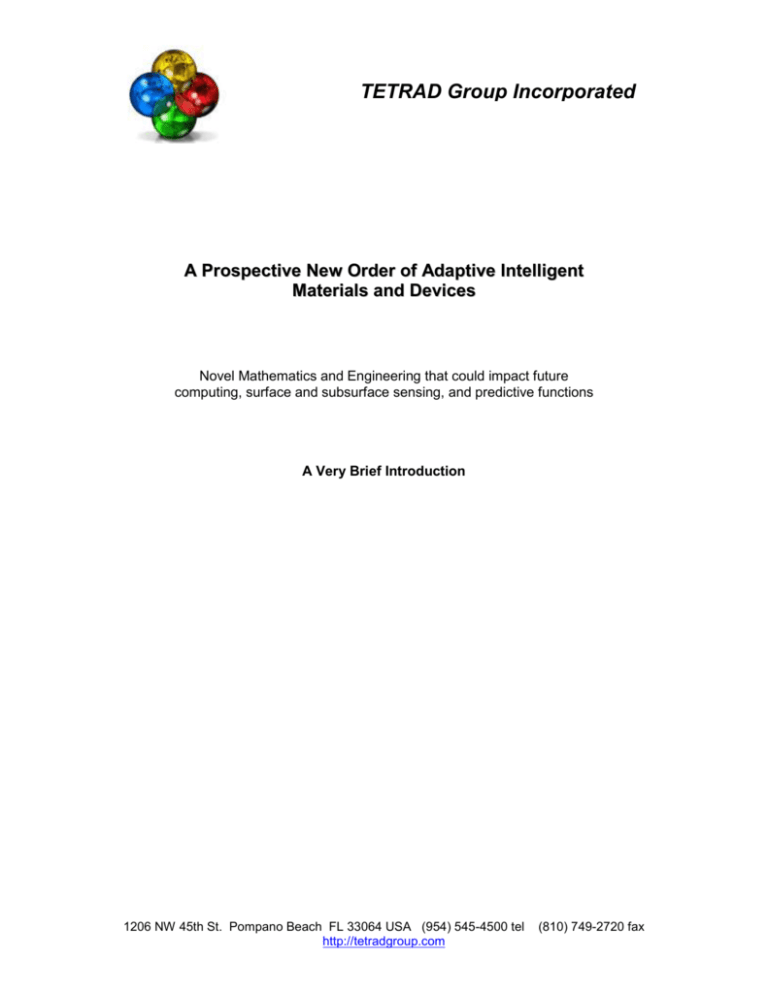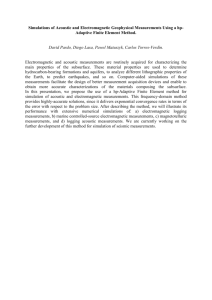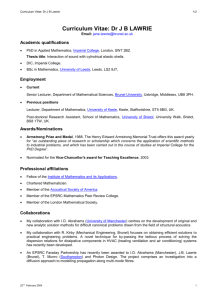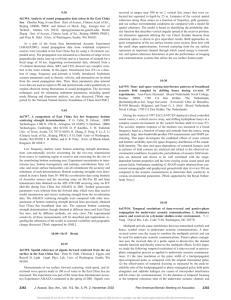An Advantage with Inverse-Problem and Soliton
advertisement

TETRAD Group Incorporated A Prospective New Order of Adaptive Intelligent Materials and Devices Novel Mathematics and Engineering that could impact future computing, surface and subsurface sensing, and predictive functions A Very Brief Introduction 1206 NW 45th St. Pompano Beach FL 33064 USA (954) 545-4500 tel http://tetradgroup.com (810) 749-2720 fax The topic of inverse or ill-posed problems is known within formal mathematics and is a discipline with increased application to a number of diverse and widely separated fields. Some of the most well-known applications can be found in semiconductor fabrication and testing processes, biomedical imaging (CAT, PET, MRI, MEG), subsurface sensing (geo, petrol, military), computer games, population forecasting, astronomy, electronic warfare and countermeasures. Otherwise known as ill-formed problems, the general case is one of where observable results (not only through imaging or other electromagnetic or acoustic signal detection) are coupled with a known model for the behavior of a propagated entity through some medium of exchange in order to determine useful information about events in that propagation process - for instance, the scattering of photons by objects such as tumors in the liver or landmines in a cornfield. Over a period of several years there have been refinements within particular areas of research in wave scattering, source detection, beam formation and propagation, and in general within computational electromagnetic modeling, imaging, and inversion. These have led to improved understanding in the mathematics of boundary conditions, simulated annealing, object recognition, and nonlinear modeling. We have developed and acquired an expertise in both the theoretical and applied aspects of this work. Our special focus has been upon the integration of classical inverse problem techniques with other mathematical tools such as category theory, Morse theory, Ramsey theory, thermodynamic diffusion-attractor models and nonlinear models of pattern recognition. The result has been fortuitous in several respects including what we believe to be promising breakthroughs for handling problems of propagation and scattering within highly dynamic, artifact-rich and otherwise fuzzy-noisy environments such as characterize the nanoscale within materials science and the microscale within biology and medicine as well as in security and energy exploration applications where common but geometrically unpredictable configurations of simple artifacts can be triggers to higher-level analytics such as neural networks and expert systems where heuristics can be used to shorten and make more accurate the detection process. Such environments and the type of objects that exist within them are important frontiers for the next generation in technologies for not only computing and imaging (among the more obvious) but also for energy exploration, containment, and consumption, where indeed we face certain global impacts and near-certain crises. As one example, we believe from early modeling and experimental results that these inverse-problem based approaches can be integrated with sensors developed in our prior work and by others, using microfluid chips, MEMS-based optical and EM sensors, and also magneto-optic faraday-effect principles, for novel applications to object detection and tracking, in biomedical as well as security applications, for a variety of materials including biological, chemical and nuclear substances. This is a somewhat radical redirection of what has heretofore been studied mainly in the context of acoustic and optical signals propagating in different media or on their surfaces. These potential breakthroughs are also in the manner by which wavelike phenomena, both electromagnetic and acoustic, are understood in the context of complex, dynamic geometries in the object materials and environments being studied. We have developed a mathematical model that incorporates multidimensional soliton formalisms as well as decomposition of large spaces into distinctive network-like elements that can be analyzed in a computationally simpler fashion, thus opening the opportunity for more efficient computation and application in areas where speed of the sensing or imaging operation is critical. Moreover, our basic approach is one that emphasizes multiscalar quantifications and relations that enable a different and, we believe, more efficient manner of addressing categorical and systematic behaviors of ensembles (atoms, molecules, nanotubes, or much larger entities such as neural and muscular bundles) than has been customary in many prior approaches. This may be termed a holo-organic approach, but with a careful distinction that we are still working with fundamentally the same partial differential equations as have been and are being used in the study of inverse problems throughout. In the course of working within the mathematics and certain applications, mainly within the semiconductor, nanomaterials, and imaging fields, we have further discovered that the inverse soliton ensemble (ISE) model has possible application beyond problem sets where electromagnetic or acoustic propagation and penetration are involved. One of the more tantalizing is that of cognitive modeling and forecasting, where in the past there have been both great advances and also barriers reached. Another is that of quantum computing, not so much in the most common focus upon encryption and decryption but in massive-scale configuration and systolic events. Our goal presently is to meet with potential partners in both the academic and corporate sectors in order to consider possible collaborations that may take advantage of our development and expertise in this area. The purpose of this brief introduction is to engage further dialogue with persons and organizations that have an interest in some of the applications that can benefit from novel inverse problem mathematics and computation; if that is the case, we may have something of value to offer. For further information contact: TETRAD Group Incorporated http://tetradgroup.com info@forteplan.com











